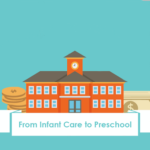
Your child comes home from school one day with instructions to present a Show and Tell.
You scratch your head, thinking: how do you prepare a seven-year-old to speak in front of an audience.
Let us tell you how, and show you what you can do to help your child ace the Primary 1 Show and Tell.
What is Show and Tell?
Show and tell is a teaching tool that school teachers use to teach young children the skills of public speaking. Some students are introduced to the concept of show and tell at preschool, when they are encouraged to bring an item from home and share or explain to the class why they chose that particular item, where they got it from and other relevant information.
When the Ministry of Education (MOE) decided to do away with exams for our local primary one students, Show and Tell was introduced as a form of assessment to measure the level of primary 1 English.
What Children Learn from Show and Tell
As part of the learning experience, show and tell aims to increase the child’s confidence to speak up in a group setting. They will also learn to develop story-telling skills, as well as conceptual thinking to make the presentation cohesive.
Through the primary 1 show and tell, students will also acquire the very important social skill of respectful listening when someone else is speaking.
However, as the show and tell component comprises about 25% of the primary 1 English language score, some parents stress over the preparation.
Everything You Need to Know About Primary One Show and Tell
Don’t worry. We will tell you everything you need to know about primary one show and tell. The teachers usually give their primary one students around up to four weeks advance preparation time. Instructions are also given to parents to help prepare their children for the two-minute speech.
The topics selected by school teachers follow the MOE parameters and are usually simple ones like “My favourite food” or “My family”.
Students are graded on three areas: Content, Language and Presentation Skills. Here is what the teacher is looking for in each category:
Content
The teacher is looking at the relevancy of the ideas to the given topic and the organisation of the presentation, for example the order of the sequence of events and the appropriate connections between ideas or thoughts.
Language
The teacher is on alert to see if the student meets the level of primary 1 English. He/she will listen out for accurate pronunciation of words, correctly formed grammatical sentences and the usage of any high-level vocabulary words.
Presentation skills
The teacher is watching the student to note if she looked at the audience (eye contact).
Can the class hear him (volume)?
How interesting is the presentation (hand gestures or facial expressions)?
The structure of the Show and Tell should include an Introduction (greeting, topic, sometimes including who, when, where, what), the Body (two to three points related to the topic, two to three sentences per point) and a Conclusion (ending statement, thank you).
Your child is not allowed to read from any notes or cue cards during the show and tell. Hence, some form of practice and memorisation of lines is necessary.
Show and Tell Preparation Guide
Once you and your child have discussed and decided on the topic to present, here are some tips to prepare your child for the primary 1 show and tell.
- Involve your child in preparing the material such as selecting the pictures or research on the topic. This will give your child a sense of control over his/her presentation.
- Do a mind map to organise your child’s thoughts. This will help arrange the sequence of the presentation.
- Encourage your child to use his/her own words as much as possible.
- Have practice sessions with your child. Record or video your child practicing so he/she has a chance to see himself/herself in action. This will also highlight areas that he/she can improve on.
- Gently guide your child to maintain eye contact, increase voice volume, enunciate words properly and/or incorporate hand gestures or facial expressions during the presentation.
- Practice, practice, practice (but don’t overdo it).
- Don’t over stress your child. Choose a time when both of you are relaxed to do the rehearsal.
- Praise your child for his/her efforts during the “practice” presentation.
For kids who are very shy, practice and encouragement are key attributes to facilitate their ability to present their show and tell.
Most importantly, acknowledge your child’s efforts after their primary one show and tell experience and boost their confidence or reassure them with positive feedback. This will encourage them to do better at their next show and tell or when they advance to oral exams (in upper primary levels).
Best of luck at your show and tell.























